Dionea flycatcher is the most famous plant - "predator", which grows on the North American continent. Its other name is "Venus flytrap". This is a very unusual flower, considered a predator among plants, as it eats bees, flies and other insects.
Its leaves have teeth, 7 cm long and 3 cm high. It is they who are used as a trap. This plant can be grown at home. We will consider the features of the Venus flytrap in this article.
Plant features
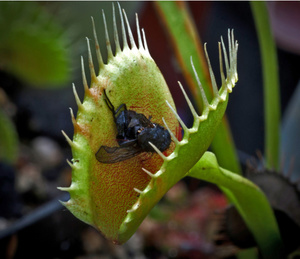 The Venus flytrap is a dwarf plant with a rosette of heart-shaped leaves with denticles at the edges. These leaves slam shut as soon as an insect touches them.
The Venus flytrap is a dwarf plant with a rosette of heart-shaped leaves with denticles at the edges. These leaves slam shut as soon as an insect touches them.
Natural feature digest living things due to a lack of nutrients that the root system needs.
Dionea blooms in May and lasts only 1.5–2 months. After that, instead of flowers, oval capsules appear, with a large number of small black seeds.
How does the flycatcher flower catch insects?
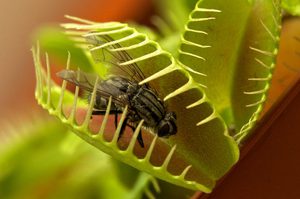 This plant feeds most often on small insects, which themselves fly in or crawl into a trap consisting of two valves. Along their edges are located two rows of teeth, along the inner row of which the glands are located.
This plant feeds most often on small insects, which themselves fly in or crawl into a trap consisting of two valves. Along their edges are located two rows of teeth, along the inner row of which the glands are located.
They contribute to the production and secretion of a very pleasant nectar, which attracts insects to the trap. The inner surface of the trap has three trigger hairs. When an insect begins to absorb nectar, it can accidentally touch them, and the trap starts to close... This happens gradually.
At first, the flaps are slightly covered, so that the insect can still move in the trap. If the victim is very small, then it can be saved, since there is a small hole between the teeth of the plant.
If this happens, the triggers stop stimulating and the trap is fully deployed again. Such a reaction mechanism is necessary for the Venus flytrap, because in this case, the loss of time associated with a false triggering of the trap due to other interference, for example, when raindrops fall into it, is prevented.
But if the insect did not manage to get out, then stimulation of triggers continues and the trap begins to close more and more tightly. At this time, the digestion process starts - from the glands located inside the valves, it begins produce digestive juice in large quantities, in which the insect drowns.
The trap will remain in the slammed state for several days. After it opens, only the undigested chitinous shell of the victim is found in it.
One trap of Dionea is designed for three digestive processes, after which it dies off.
Growing and caring for the Venus flytrap
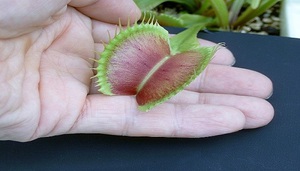 This plant grows well both in the wild and in the summer cottage.
This plant grows well both in the wild and in the summer cottage.
If you grow it at home, then in this case it will be necessary adhere to certain rules care for this flower.
Venus flytrap care includes:
- good lighting;
- correct watering;
- optimum temperature and humidity.
Let's consider these points in more detail.
Flycatcher flower prefers good lighting, since in the wild it usually grows on the sunny side. For the plant to feel comfortable, it is necessary to provide it with bright light for at least 4 hours a day.
But at other times it should not be in the shade. It is best to put the pot with dionea on the south window, and in summer it is advisable to take it out to the balcony.
Watering the plant... Dionea (Venus flytrap) care includes proper watering, for which only distilled water is used. It is recommended to moisten the soil moderately so that the earthy clod does not dry out and there is no excess moisture.
It is recommended to reduce watering in autumn. Water should be poured exclusively into the pan so that the topsoil does not compact and the roots of the plant are not deprived of oxygen.
Temperature and humidity
Venus flytrap grows well at 70–90% humidity. To achieve this indicator, the plant should put in a terrarium or another glass vessel.
The flower loves not only humidity, but also coolness. At temperatures above +30 degrees, it completely stops growing. The transferred stress then has a bad effect on him, and he is very reluctant to resume his further development.
In the natural habitat of the flycatcher, the temperature can be kept at around +40 degrees for a long time. But the plant does not suffer from this, since its roots are in cool soil.
What to feed the plant
An important step in caring for a flycatcher is feeding it. For this, the following insects are used:
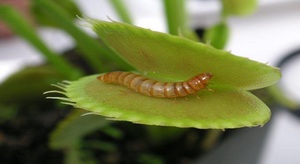 Mosquitoes.
Mosquitoes.- Flies.
- Worms.
- Larvae.
- Slugs.
They should be small and soft... If the food is not completely digested by the plant, the trap can rot. It is forbidden to feed the flower with any kind of meat.
Resting care
At the end of autumn, the flower begins to prepare for the dormant period, and this can be noticed by the cessation of leaf growth. At this time it is necessary reduce the amount of watering, but the soil must still be moistened.
It is best to place the flycatcher in a cool and dark place, where the temperature will keep around +10 degrees.
Also, the plant is needed regularly feed through the ground... For this, fertilizer is added to the water intended for irrigation once a week. It is important not to overfeed the flower, as it can die from this.
Diseases and pests
Dionea can be exposed to various diseases and pests:
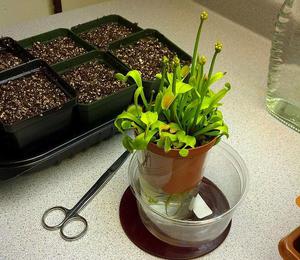 Aphids - they cause the new traps to bend and deform. To eliminate it, use a special aerosol with any drug.
Aphids - they cause the new traps to bend and deform. To eliminate it, use a special aerosol with any drug.- A spider mite is a fairly common attack that is fought by irrigating the flower with an anti-tick agent.
- Black soot fungus - occurs when the plant is constantly in a very wet and humid environment. In this case, let the soil dry out and use a fungicide.
- Gray rot - a fungal infection contributes to the formation of this scourge, which after a while becomes covered with fluff. To get rid of it, remove the upper part of the flycatcher, after which the plant is completely treated with a fungicide.
- Bacterial lesion — it is not a disease, but a physiological cost. It happens that the trap of the Venus flytrap does not completely digest the insect, as a result of which it begins to decompose. This can spread to the trap, and then to the entire plant. To eliminate the problem, the sick trap is eliminated.
Thus, following certain rules, this amazing plant will delight you with its unusual appearance for a long time.
It is undesirable to slam his traps for fun, as this not only wastes his energy, but also leaves him without food. If you do this too often, the trap may turn black and fall off, which will reduce the decorative effect of the entire flower.
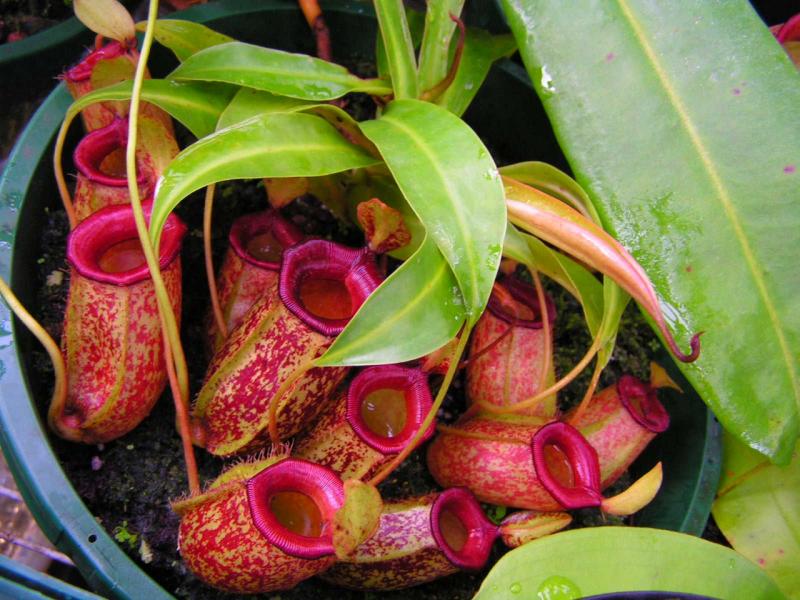

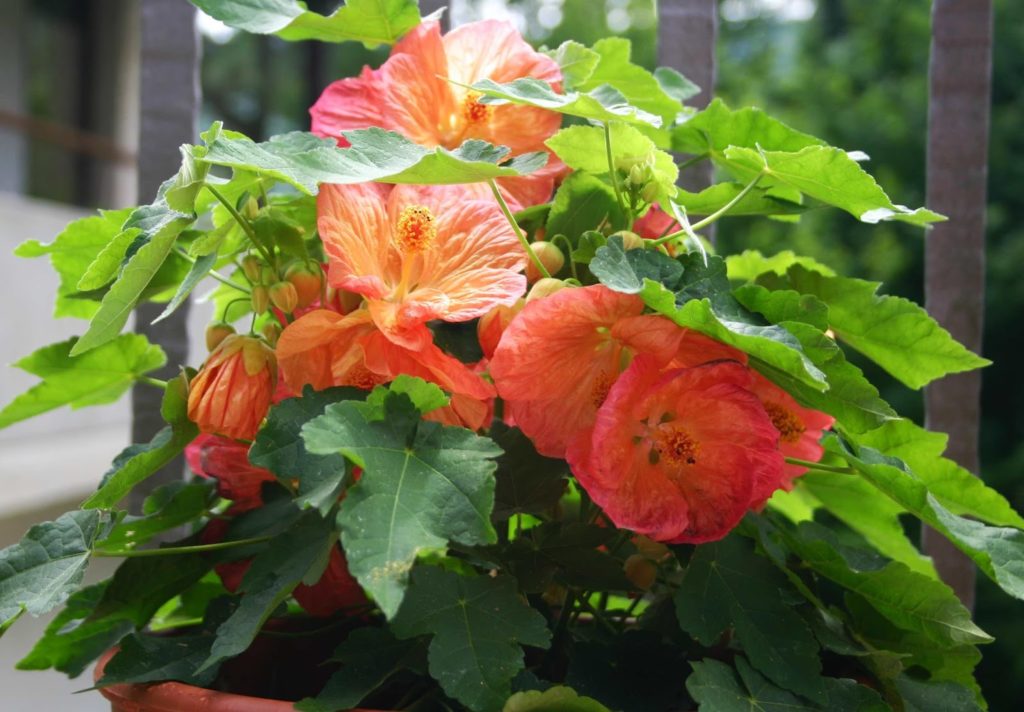
1 comment